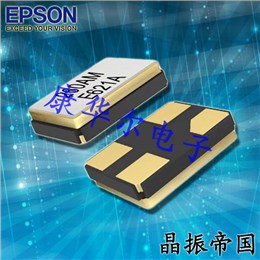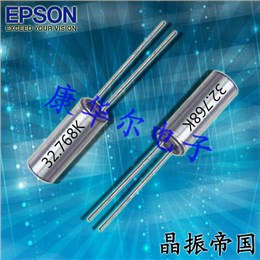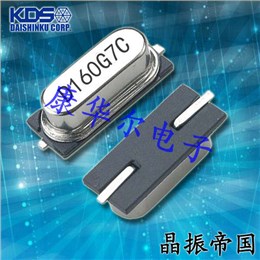Statek低频振荡器设计的比较
Comparison of Low Frequency Oscillator Designs
Oscillator Types
Crystal-controlled oscillators can be divided into two basic groups: positive reactance or negative reactance. The positive reactance mode is commonly called a “parallel resonant” or “antiresonant” oscillator. A pierce oscillator is one commonly-known positive reactance oscillator. The negative reactance mode is usually referred to as a series oscillator. Statek crystals are designed and tuned for a specific mode of operation (Table 1).
Pierce Oscillators
The pierce oscillator (Figure 1) utilizes a single inverter, with two phase-shift capacitors and the crystal providing 180ºC phase shift in the feedback loop. The crystal behaves electrically as though it were an inductor. The frequency of oscillation is 30ppm to 300ppm above the series resonant frequency of the crystal. If the crystal is removed from the circuit, the oscillator will usually stop oscillation. Compared to a series oscillator, the pierce oscillator generally starts slower and draws less current. Miniaturized portable equipment (battery powered), including hand held data entry terminals, utilizes the pierce oscillator.
Series Oscillators
Generally a series oscillator (Figure 2) consists of two cascaded inverters with the crystal connected between the second inverter output and the first inverter input. The crystal behaves electrically as though it were a capacitor. The oscillator will usually free-run at a higher frequency if the crystal is removed. Compared to the pierce oscillator, it starts faster (typically 100 milliseconds) and draws higher current.
Pierce or Series?
The choice of crystal or oscillator types depends primarily on performance requirements. Table 2 summarizes the performance characteristics of pierce and series oscillators. The CX-1V crystal has a higher Q than the CX-1H because it is sealed in an evacuated package. The CX-1H crystal has approximately 3 to 5 times higher motional resistance (lower Q) because it is hermetically sealed close to atmospheric pressure.
Statek低频振荡器设计的比较
振荡器类型
晶体控制振荡器可以分为两个基本组:正电抗或负电抗。正电抗模式通常称为“并联谐振”或“反谐振”振荡器。皮尔斯振荡器是一种通常已知的正电抗振荡器。负电抗模式通常被称为串联振荡器。Statek石英晶振是为特定的操作模式而设计和调谐的(表1)。
皮尔斯振荡器
皮尔斯振荡器(图1)使用一个具有两个相移的单个反相器电容器和晶体在反馈回路中提供180ºC相移。晶体的电学行为就像是一个电感器。振荡频率比晶体的串联谐振频率高30ppm至300ppm。如果晶体从电路中移除,石英晶体振荡器通常会停止振荡。与串联振荡器相比,皮尔斯振荡器通常启动较慢,消耗的电流较少。小型便携式设备(电池供电),包括手持数据输入终端,利用皮尔斯振荡器,
串联振荡器
通常,串联振荡器(图2)由两个级联反相器组成,贴片晶振晶体连接在第二反相器输出和第一反相器输入之间。这种晶体在电学上表现得就像一个电容器。如果晶体被移除,振荡器通常将在更高的频率下自由运行。与皮尔斯振荡器相比,它的启动速度更快(通常为100毫秒),并汲取更高的电流。
皮尔斯系列?
晶体或振荡器类型的选择主要取决于性能要求。表2总结了皮尔斯振荡器和串联振荡器的性能特征。CX-1V晶体具有比CX-1H更高的Q,因为它被密封在抽空的封装中。CX-1H晶体具有大约3到5倍高的运动电阻(较低的Q),因为它在接近大气压的情况下是密封的。
Statek低频振荡器设计的比较
表1。用于基本振荡电路的推荐Statek晶体




 进口爱普生晶振FA-20H,Q24FA20H00005水晶振动子
进口爱普生晶振FA-20H,Q24FA20H00005水晶振动子 EPSON爱普生晶振C-2,Q12C20001000600水晶振动子
EPSON爱普生晶振C-2,Q12C20001000600水晶振动子 SMD-49无源谐振器,KDS日本晶体,1AJ250004B两脚无源晶振
SMD-49无源谐振器,KDS日本晶体,1AJ250004B两脚无源晶振